About Us
- ADD: Songxia Umbrella Industrial Developing Zone, Shangyu District, Shaoxing City, Zhejiang Province, China
- TEL: +86 575 8216 8370
- MOB: +86 152 5850 8273
- EMAIL: hope@youyileisure.com
. Canopy Made of 190 D Polyester with side flaps for Full shelter Protection
. UPF 50+ sun and weather Protection and Water repellent, protects from UVA and UVB rays
. Canopy Supported by 4 mm steel ribs and a 4mm steel stretcher
. Telescoping pole with a plastic tip held in place by nylon clip
. Side zippered windows for efficient airflow


The 8 foot Umbrella provides easy, maximum protection to keep you sheltered from the sun, wind, and rain. It provides side flaps for full shelter protection, zippered windows for extra airflow, and internal pockets to store stakes or other valuables. It is lined with a UPF 50+ undercoating that blocks over 99.5 percent of the harmful UVA and UVB rays. The Super-Brella is a simplified version of the Sport-Brella and is still great for camping, sporting events, and the beach
When choosing an umbrella to purchase, there are some things you should know. First, a Beach Umbrella and a Garden Umbrella are two different animals. They may look the same, but they have different requirements of which you should be aware.
Beach Umbrellas vs Garden Umbrella
When comparing Beach Umbrellas vs Garden Umbrella they may look very similar, they probably both shade you well, but
. Patio umbrellas tend to be much heavier. You are not carrying them as much as you would a beach umbrella.
. The poles on Patio Umbrellas need to be thicker to avoid snapping.
. The poles on Patio Umbrellas fit inside a table hole and a base.
. Garden Umbrella require a base, and beach umbrellas don’t.
. Garden Umbrella tend to have a flat bottom pole. Flat bottoms are the least effective for digging or “planting,” though of course, they’re also the safest when it comes to potential impaling.
. Beach umbrellas need a pointed bottom to spike into the sand.
Beach Umbrellas vs Garden Umbrella Materials
Aluminum is lightweight, which makes it easier to carry. It will also show ear long before it is likely to break. Wood is more decorative and may be a better choice for a patio umbrella. Plastic, fiberglass, or PVC frames and poles can be good choices aswell, as long as the diameter of the pole is at least an inch wide, and the plastic feels sturdy.
Protect your family from the harsh rays of the sun, shield your eyes from an afternoon glare, and get a reprieve from the sweltering summer heat all with the simple addition of a patio umbrella. Read this guide to find the best umbrella for your space.
1.Determine the Umbrella Size and Shape You Need
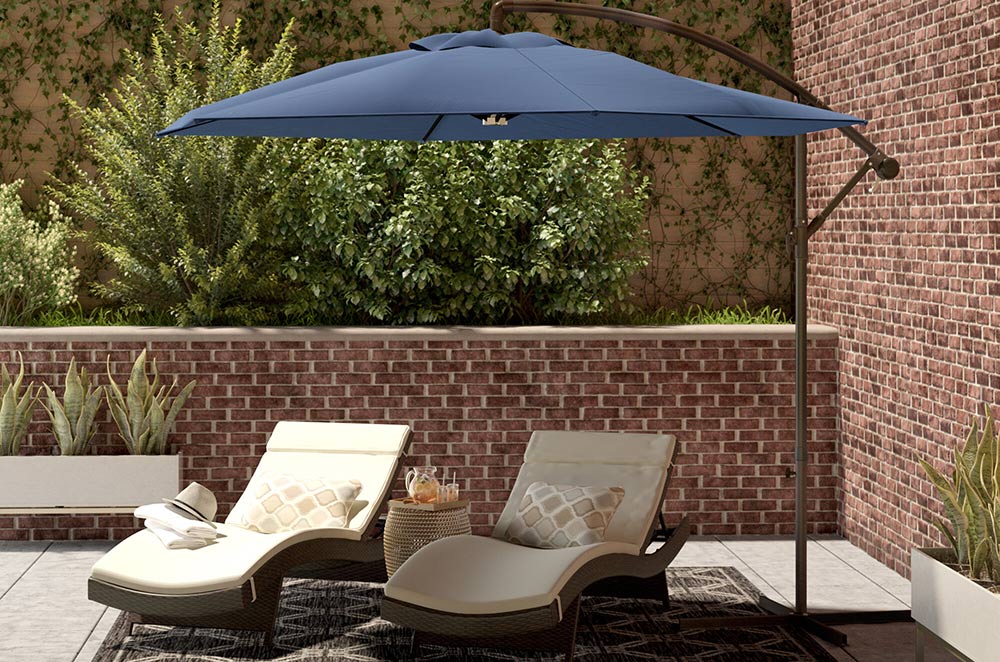
Break out the tape measure and find out exactly how much space you need to shade. When you’re throwing shade on a lounge or play area, choose an umbrella that covers as much of the space as possible. Remember, a larger umbrella means more space for the kids to play while they’re still protected from the sun. Your umbrella should be 7 to 9 feet tall, no matter which type of area you’re shading.
For an outdoor table, you need a 2-feet shade buffer around the table for optimal comfort. The extra shade provides a fuller glare-free experience depending on where the sun is in the sky. The shape of your umbrella should match the shape of your table for a cohesive look. If you can’t find an umbrella that matches your table, you might want to buy a patio umbrella table instead. Refer to the chart below for exact measurements.
Patio Umbrella Size Chart
| Patio Table Size(Diameter/Length in Feet) | 2 Feet or Less | 3 Feet | 4 Feet | 5 Feet | 6 Feet | 7 Feet | 8 Feet |
| Umbrella Size(Diameter/Length in Feet) | 6 Feet | 7 Feet | 8 Feet | 9 Feet | 10 Feet | 11 Feet | 12 Feet |
2.Give Your Umbrella Plenty of Support With a Sturdy Base
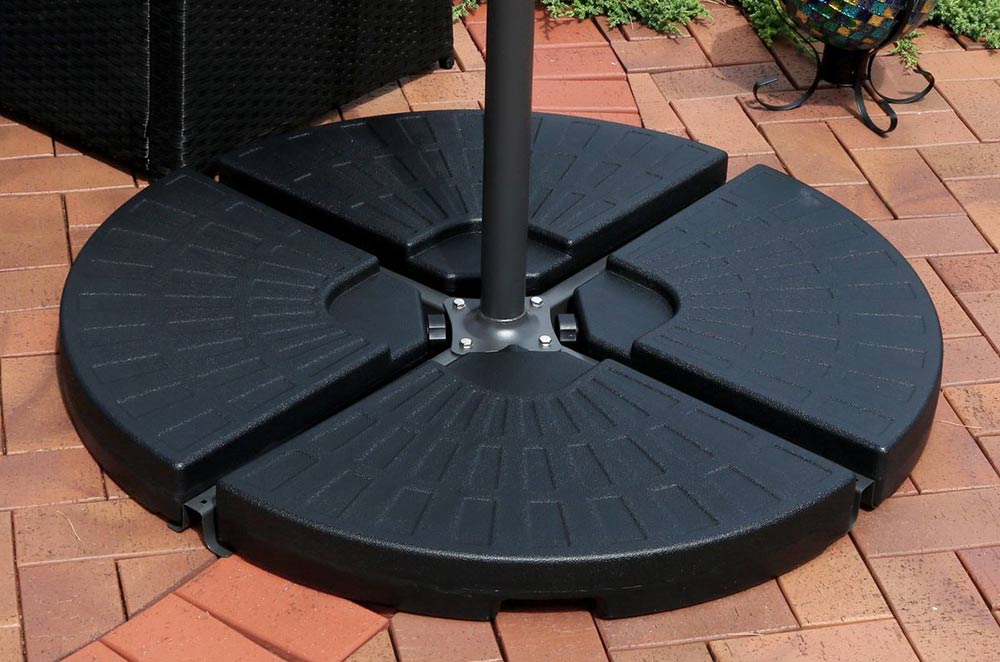
Before you complete your purchase, add an umbrella base to your order. You don’t want the excitement of getting your umbrella in the mail to be overshadowed by disappointment when you can’t use it until you order the base. Free standing umbrellas need heavier bases than their table counterparts since they don’t have the extra support of a table.
Refer to the chart below to make sure your base is heavy enough to keep your umbrella standing tall. Fifty pounds is the absolute minimum base weight for a free standing umbrella. Reserve anything lighter for your table umbrellas.
Patio Umbrella Base Weight Chart
| Free-Standing Umbrella Size (Diameter/Length in Feet) | 5 Feet or Less | 6 Feet | 7 Feet | 8 Feet | 9 Feet | 10 Feet+ |
| Minimum Base Weight (In Pounds) | 50 lbs or Less | 60 lbs | 70 lbs | 80 lbs | 90 lbs | 100 lbs |
3.Find a Shade That Will Last, Rain or Shine
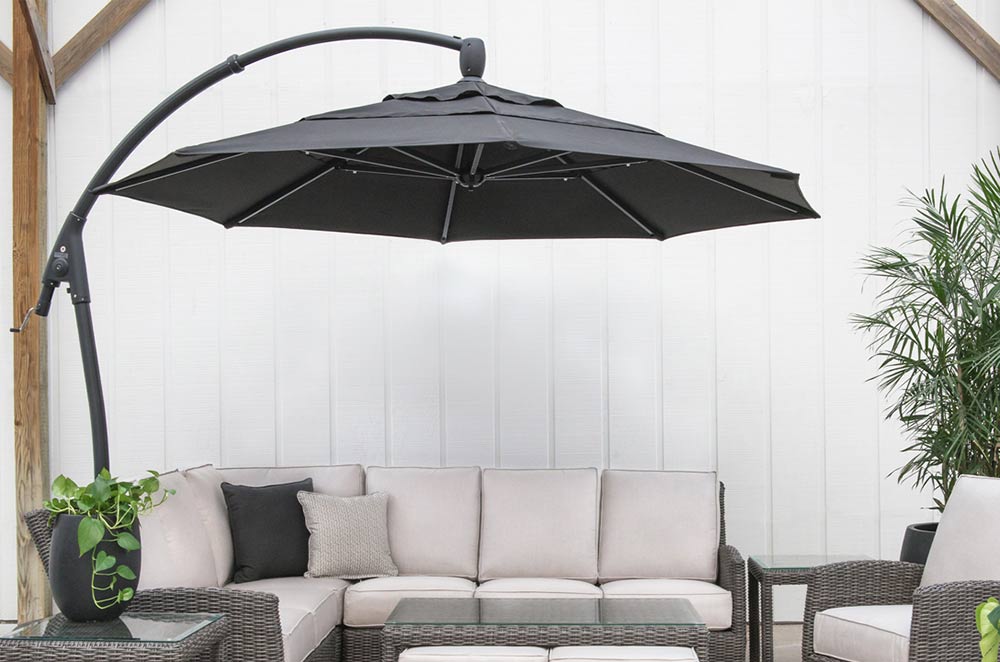
Typical outdoor sun umbrellas made of plastic or lightweight fabrics are not waterproof, so they may not hold up well in heavy rain. Just like your umbrella frame, your shade’s fabric needs to be durable enough to survive in unpredictable weather. That means anything that is susceptible to fading, mold, or holes is out of the question. Sunbrella is the miracle umbrella fabric. It’s water and fade resistant, has UV protection, and comes with its own suit of armor. Okay, everything but that last one.
For a patio umbrella that won’t fade in the sun, you’ll want one made from canvas or vinyl. To save money, go with a polyester umbrella. It’s almost as durable as Sunbrella and is similarly resistant to fading, mold, and holes or tears. Check out our guide on Patio Decorating Ideas to make sure your umbrella fabric coordinates with the rest of your patio decor.
4.Choose a Frame That Can Withstand Rough Weather
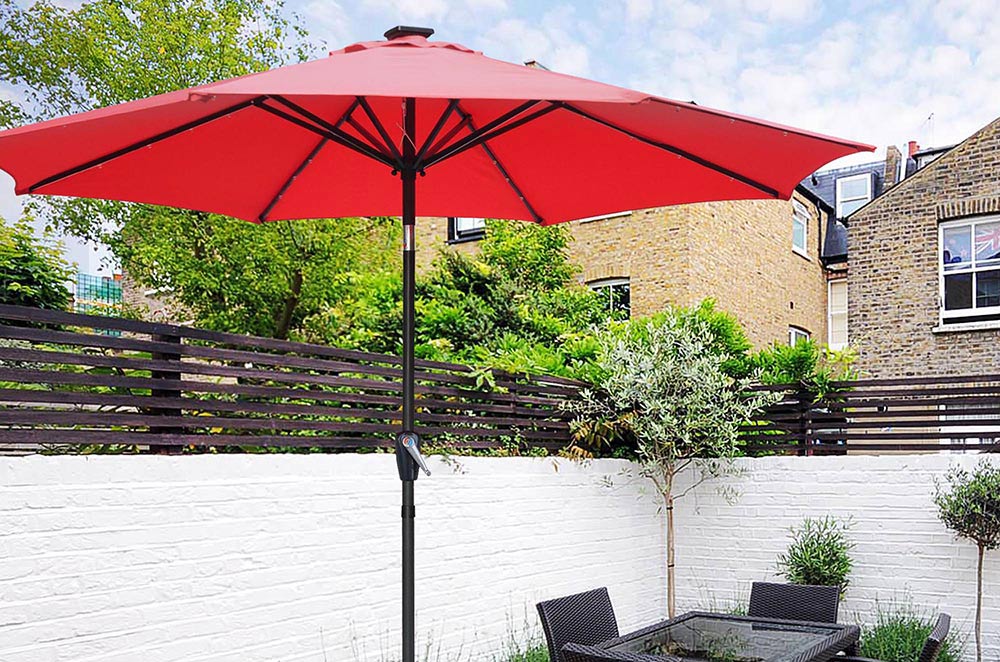
Patio umbrellas are made survive in all kinds of weather. While you should always try to close your umbrella when the wind picks up, sometimes you might forget. Or maybe it’s raining and you don’t feel like going outside — we get it. If you live in an especially windy area, or you have a tendency to forget to close your umbrella, you need one with a strong frame.
Look for an umbrella style that works in your climate. There are durable sun umbrellas made to withstand high winds; these umbrellas often have fiberglass ribs to protect the frame from bending.
An aluminum frame is your best bet for standing up to storms and other bad weather. Plus, aluminum resists corrosion, so it will look just as great in a few years as it does the day you buy it. Choose a steel frame if you’re on a budget but you still need something strong and sturdy. It might not stay as pretty as an aluminum option, but it will still endure the wind and the rain.
5.Choose an Umbrella Design that Suits Your Needs
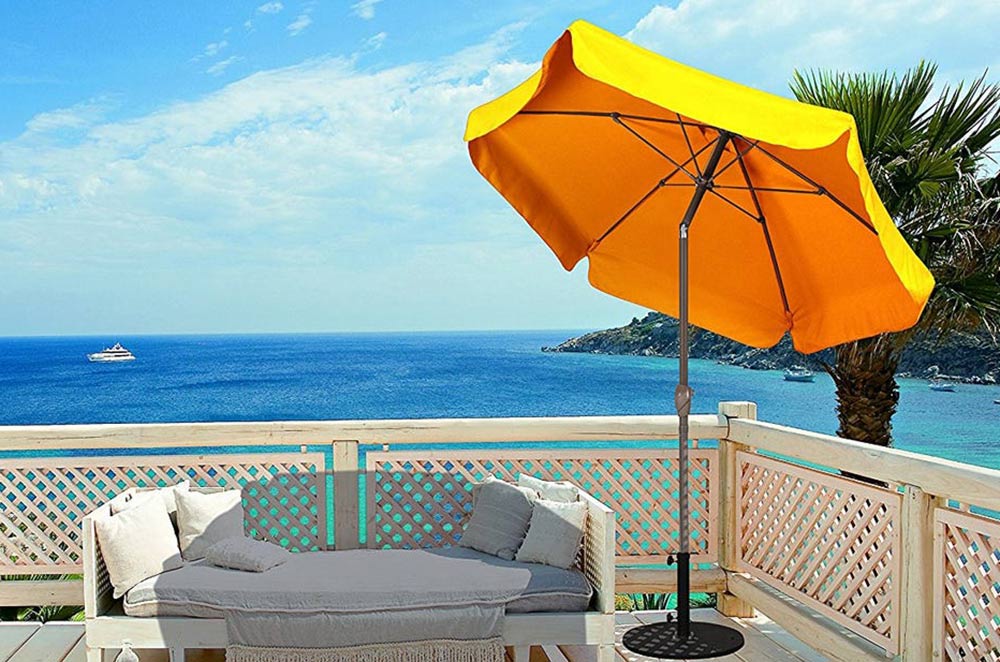
Lunching poolside with friends, lounging away the afternoon in an outdoor chaise, or playing in the sandbox with your little ones — no matter what your patio activities include, there is an umbrella to meet your needs.
Choose a standard market umbrella to accompany your outdoor dining table. Market umbrellas also work for open seating or play areas but with a center pole you run the risk of blocking your view. A cantilever, or offset umbrella is a better choice for open spaces. The pole is off to the side making the area obstacle free. Offset umbrellas are particularly useful for shading benches and chairs that don’t belong to a matching patio table. You can also buy several offset umbrellas to create an expansive canopy for special events, such as weddings or other outdoor celebrations.
6.Save Your Elbow Grease With an Easy-to-Clean Umbrella
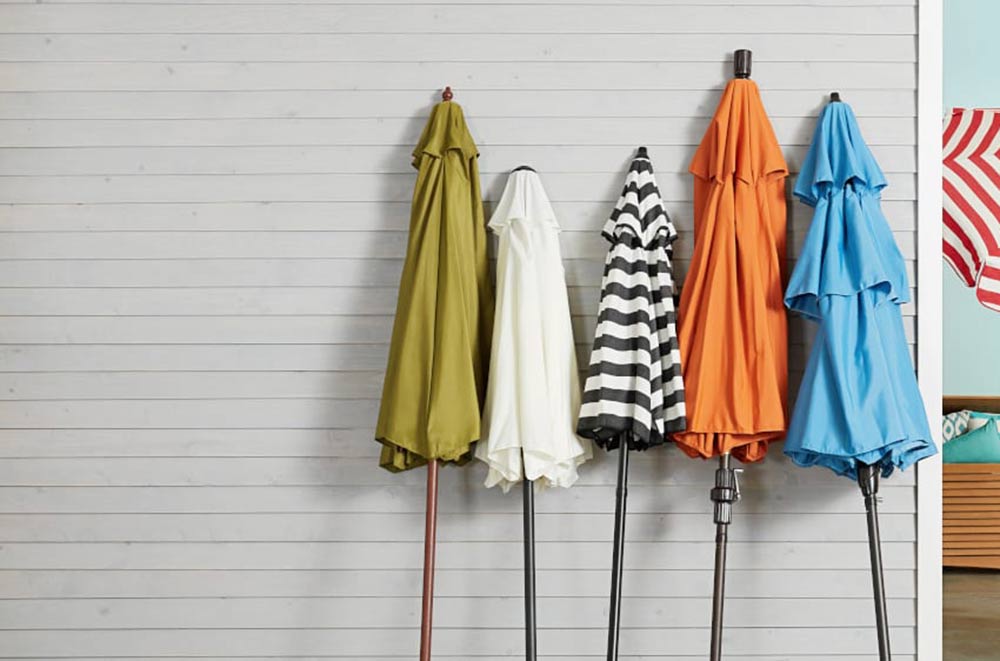
Although outdoor umbrellas are designed to withstand outdoor conditions, they do get dirty from time to time. Choose a cleanable umbrella now and save yourself a scrubbing-induced headache in the future.
Umbrellas made with Olefin or Coolaroo fabrics are easy to wipe clean. Plus, they resist mold and stains so you don’t have to clean them on a regular basis. In fact, you can clean them once a year when you put them away for the season and they’ll be good to go.